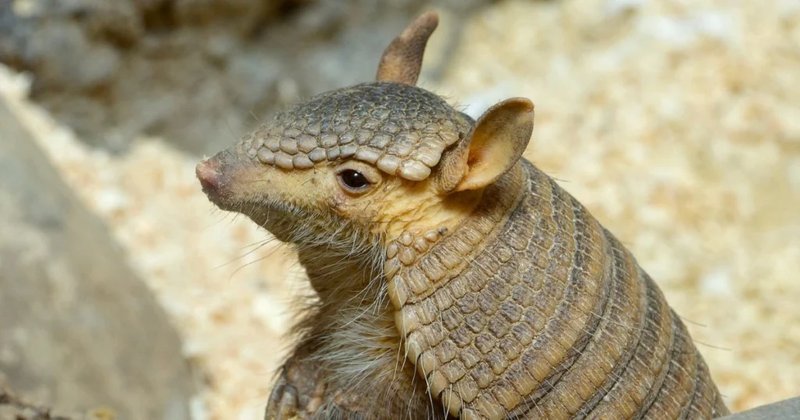
Picture this: you’re at a backyard barbecue, and someone starts telling wild tales about armadillos. Maybe they say armadillos are always solitary or that they can roll into a ball like some species of hedgehogs. While it’s fun to share stories, many of these claims are just that—stories. So let’s take a closer look and bust some of these common myths about armadillos together.
Myth 1: Armadillos Can Roll Up into a Ball
You might have heard that armadillos can roll themselves up tightly into a little ball when threatened, similar to how a hedgehog does. Honestly, it’s a charming thought but completely untrue! Unlike hedgehogs, which can curl into a spiky ball for protection, armadillos have a different defense mechanism.
When facing danger, most armadillos simply dig themselves into the ground or run away. They’re quick diggers, and some can burrow into the soil at impressive speeds. Imagine trying to escape a predator by diving into the nearest soft dirt—that’s an armadillo for you! In fact, their tough shell is more about protection from predators and environmental elements than a means to roll away.
Myth 2: All Armadillos Are the Same
Many people think all armadillos look the same, but there are actually 21 different species! The nine-banded armadillo is the most recognized one, especially in the United States. But if you take a step back, you’ll see that some species differ significantly in size, habitat, and behavior.
For instance, while the nine-banded armadillo thrives in warm, humid environments, others prefer drier, harsher conditions. The pink fairy armadillo, which is about the size of a mouse, is quite the contrast. Its cute, pink shell and tiny size show how diverse this group really is. So, next time you see one, remember there’s a whole family of armadillos with their own unique traits out there!
Myth 3: Armadillos Are Blind
Another common misconception is that armadillos are completely blind. While their eyesight isn’t perfect, they’re not flying completely blind, either! These creatures have surprisingly good vision and can detect movement quite well.
What they really rely on, however, is their sense of smell. Their little snouts are loaded with sensitive olfactory receptors, allowing them to sniff out food even when it’s buried underground. Imagine being able to smell a yummy snack buried under a pile of leaves—that’s how armadillos find their meals, which often include insects, grubs, and even small plants. So, while they might not be seeing the world like an eagle, they can certainly navigate it just fine!
Myth 4: Armadillos Are Dangerous to Humans
You might be surprised to hear that some folks think armadillos can be dangerous to humans. Here’s the thing: while they can carry diseases like leprosy, the risk of transmission is extremely low. It’s important to remember that armadillos are not aggressive creatures.
In reality, they tend to avoid humans whenever possible. If you encounter one, it’s likely because it’s just minding its own business—probably sniffing around for a tasty bug. To keep things in perspective, you’d have a higher chance of getting a cold from a sneeze than facing any significant health risk from an armadillo. Just treat them with respect and let them go on their way!
Myth 5: Armadillos Are Just a Southern Thing
When you think of armadillos, you might picture them wandering around in the southern U.S., but that’s not the complete story! While it’s true that the nine-banded armadillo is commonly found in warmer regions, they’re expanding their range northward.
Thanks to climate change and other factors, armadillos have been spotted as far north as Illinois. They’re adaptable little creatures, and they’ve proven quite resourceful in finding new homes! So while they might be the icons of southern culture, the truth is you might just run into one in your own backyard—regardless of where you live.
Myth 6: Armadillos Are Just for Show
Lastly, armadillos often get labeled as mere oddities of nature. Yes, they look unique with their hard shells and quirky movements, but they play an important role in the ecosystem. Their burrowing habits help with soil aeration and can even promote plant growth!
Additionally, by eating insects and pests, they naturally help control those populations, benefiting farmers and gardeners alike. These little critters might not be the stars of a wildlife documentary, but they certainly keep the environment in balance.
Final Thoughts
There you have it—six common myths and misconceptions about armadillos debunked. These fascinating creatures deserve a little respect and understanding instead of being swept into the realm of myths. The more we know about them, the better we appreciate their role in nature.
So next time you spot an armadillo, take a moment to admire it and remember that there’s a lot more going on with these little armored wonders than you might have thought! Whether they’re digging up the yard or exploring the local park, armadillos are truly remarkable animals that can surprise us in many ways.

